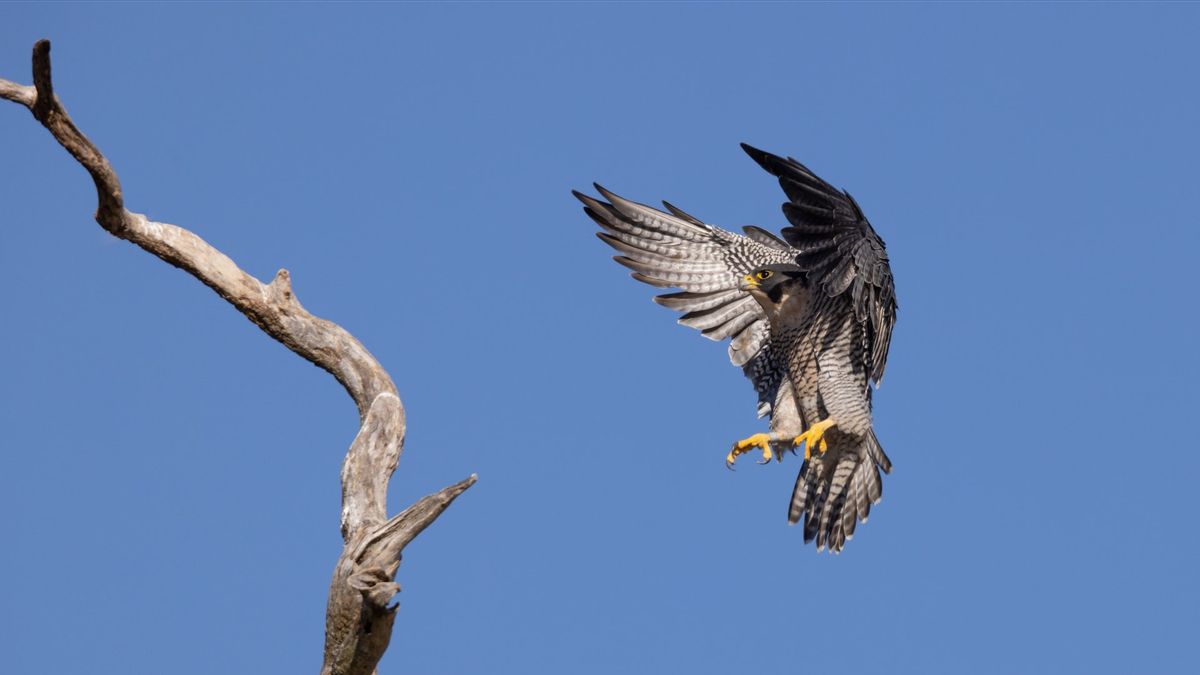YOGYAKARTA - Alap-lap crater or eagle peregrine, (Falco peregrinus), there are also those who call duck eagles, including the most widespread predatory species, with a population breeding in each continent except Antarctica and many ocean islands. Sixty subspecies are recognized. The eagle peregrine is known for its diving speed during flights that can reach more than 300 km (186 miles) per hour making it not only the fastest bird in the world but also the fastest animal in the world.
The color is bluish gray above, with a black line at the bottom white to white yellowish. Adult Peregrine ranges from 36 to 49 cm (14.2 to 19.3 inches) in length. Strong and fast, they hunt high and then dive into their prey.
Achieving an incredible speed of more than 320 km (200 miles) per hour, they attack with their claws tightened and kill with pressure and maneuverability effects.
Their prey includes ducks and a variety of small birds and coastal birds. Peregrines inhabit the rocky open area near water where birds are abundant. The usual nest is only a high hole on the cliffs, but some people use city skyscrapers or tree nests built by other bird species.
The characteristics of the eggs are three or four red brown eggs, and the incubation lasts about a month. Young to grow up in five to six weeks.
The captiveing peregrine eagle has long been used in eagle sports. After World War II, the peregrine eagle experienced a sharp population decline in most of its global reach. In most areas, including North America, the main cause of the decline was traced to the DDT pesticide, which birds obtained from their bird prey. The chemicals have become concentrated in the peregrine tissue and interfered with the intake of calcium in the egg's skin, causing them to become very thin and prone to damage.
In the UK Islands, deaths directly from other pesticides, dieseled, are the most important cause of the decline. Following the ban or large reduction in the use of large parts of organoclorin pesticides, the population has recovered in almost every part of the world and is now exceeding the historical level in many regions.
The American peregrine eagle (F. Peregrinus anatum), which was once bred from Hudson Bay to the southern United States, was previously an endangered species. It completely disappeared from the eastern part of the United States and eastern Canada boreal in the late 1960s.
After Canada banned the use of DDT in 1969 and the United States in 1972, an intensive captive and reintroduction program began in both countries. Over the next 30 years, more than 6,000 descendants were released into the wild.
North America's population has fully recovered, and since 1999 peregrine has not been listed as endangered. Peregrine has been listed as the species the International Union for Conservation of Nature (IUCN) has considered since 2015.
After understanding the Alap-Alap crater, see other interesting news on VOI, it's time to revolutionize news!
The English, Chinese, Japanese, Arabic, and French versions are automatically generated by the AI. So there may still be inaccuracies in translating, please always see Indonesian as our main language. (system supported by DigitalSiber.id)













